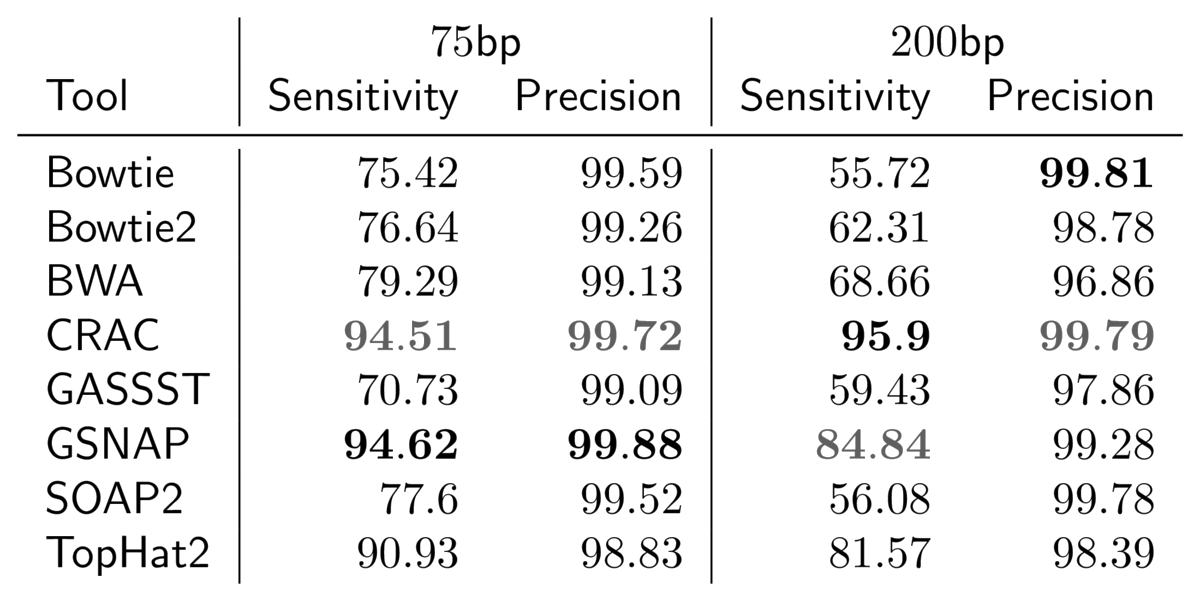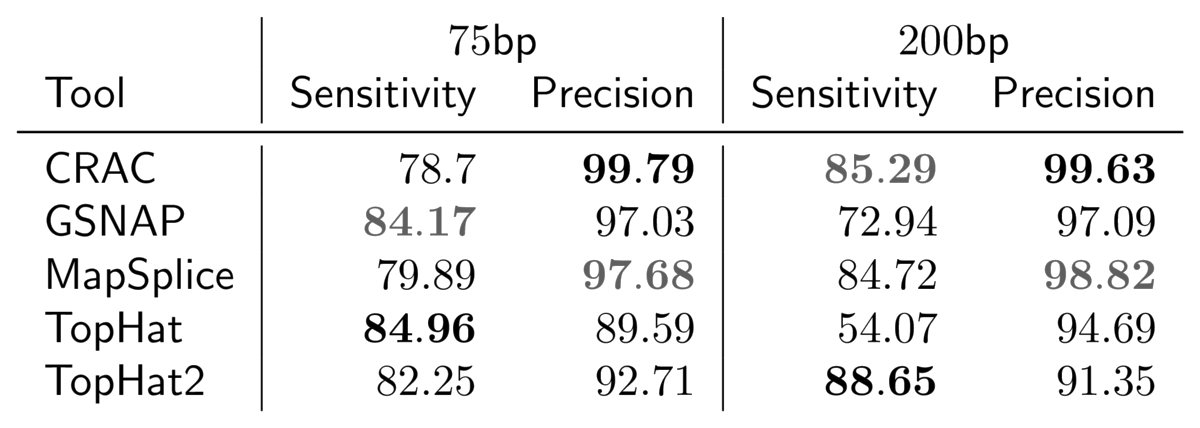Results
To assess CRAC’s ability to align reads and predict biological causes accurately we designed simulated data and compared its performances against similar softwares. Those comparisons can be found in the article. But they can also be found — updated — here.
Comparison on simulated data
The following comparisons were performed with a simulated dataset on the Human genome.
Mapping reads
We compared the mapping capability of CRAC (1.0.2) to Bowtie (0.12.7) and Bowtie2 (2.0.2), BWA (0.5.9), GASSST (1.27), GSNAP (2011-03-28), SOAP2 (2.20) and TopHat2 (2.0.6). It is noteworthy that apart from GSNAP and TopHat2, the other mappers are not designed for RNA-Seq data. That explains their poor performances on those datasets. That does not mean they are poor tools! That only illustrates the need for specific tools. Using the right tool for the right task.

Predicting splicing junctions
This time the comparison was performed using GSNAP (2011-03-28), MapSplice (1.15), TopHat (1.2.0) and TopHat2 (2.0.6).

Predicting fusion junctions
The assessed tools were TopHatFusion (0.1.0) and MapSplice (1.15).
Comparison on real data
Comparison on simulated data is interesting since it gives an insight on each tool’s sensitivity and accuracy. However it hardly captures all the complexity from real data and therefore does not replace it.
The comparison on real data being a more complex work, and therefore you may refer to our article for the detailed figures.
We performed analysis using real data on the prediction of splice junctions and fusion junctions.
Predicting splice junctions
All reads from the ERR030856 dataset were treated using the previously mentioned softwares.
The predictions they made were compared to the known exons in the RefSeq as well as known junctions. The predictions were then separated in three categories: known junctions (KJ), new junctions (NJ): known exons but unknown junctions, and other junctions (OJ).
We also evaluated the predicted junctions by mapping them to known ESTs.
Predicting fusion junctions
We evaluated the fusion junction predictions against real data from Edgren’s work.